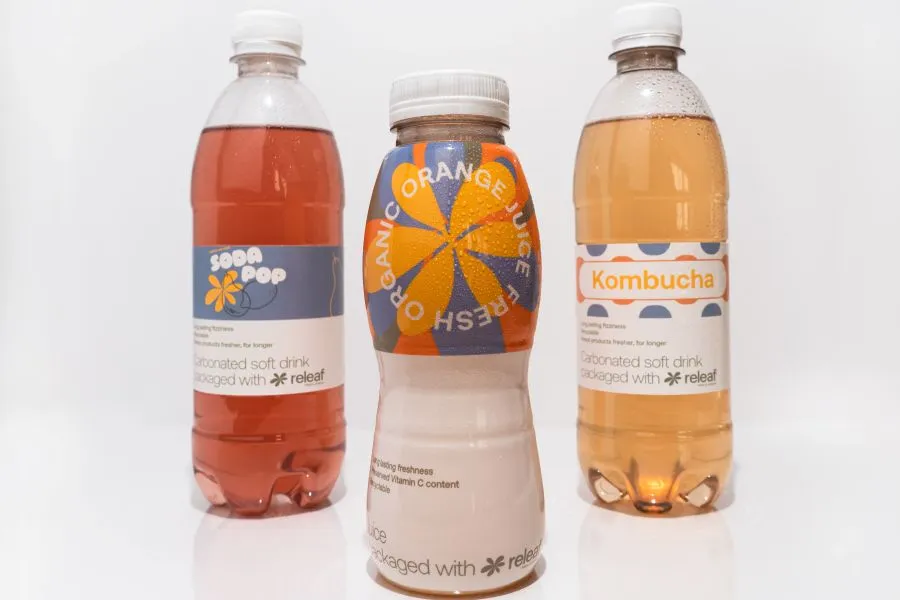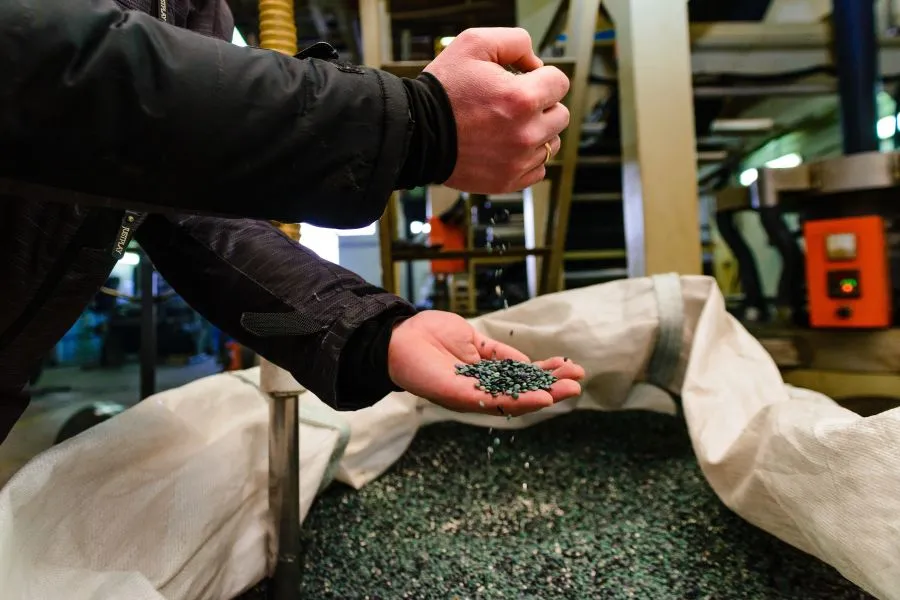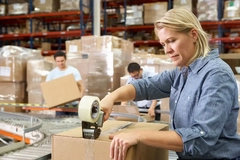Experts debate bioplastic innovations amid greenwashing, regulations, and fossil fuel reliance
Key takeaways
- Avantium, Aimplas, and Oceana experts discuss bioplastics’ role in cutting fossil-based plastic use.
- Debate grows over greenwashing and unclear biodegradability claims.
- Stronger regulation and definitions seen as key to progress.
Bioplastic solutions are on the rise as consumers and manufacturers seek to reduce reliance on fossil fuel-based virgin plastics. However, their market adoption poses challenges, including fair regulation, greenwashing claims, and the assumption that bioplastics do not perform as well as conventional plastics.
Packaging Insights speaks with Avantium, Aimplas, and Oceana about recent bioplastic innovations, the role bioplastic can play in reducing reliance on virgin plastics, how to define bioplastic, and greenwashing concerns.
Consumer confusion
Dr. Gert-Jan Gruter, chief technology officer at Avantium, and Antonio Ordovás, packaging researcher at Aimplas, identify confusion around the term “bioplastics.”
Ordovás explains: “When we talk about bioplastics, it’s important to clarify a common source of confusion: ‘bio’ does not always mean ‘biodegradable,’ nor does it always mean ‘bio-based.’” Some plastics of renewable origin do not degrade, such as bio-PE or bio-PET, and there are fossil-based polymers that do, like polybutylene adipate terephthalate.”
Similarly, Gruter states that bioplastics are bio-based, degradable, or both. He adds that it is also confusing when fossil-based biodegradable polymers, such as polycaprolactone, are described as bioplastics.
Gruter and Ordovás assert that bioplastics can be derived from natural biopolymers like cellulose or starch or synthetic polymers made with bio-based feedstocks, like PLA or bio-PE.
Bioplastics as a “false solution”
Dr. Kimberly Warner, senior scientist at Oceana, asserts that bioplastics are not a viable solution to reducing plastic pollution.
.webp) Oceana’s Warner urges governments to use third parties to validate compostability claims.“Reducing the production of plastic and moving to non-toxic reusable and refillable products is the only way to tackle the plastic pollution crisis head-on,” she says.
Oceana’s Warner urges governments to use third parties to validate compostability claims.“Reducing the production of plastic and moving to non-toxic reusable and refillable products is the only way to tackle the plastic pollution crisis head-on,” she says.
Warner notes that products made of bio-based, biodegradable plastics are presented as sustainable alternatives to conventional plastics. However, she argues that these claims are misleading.
“They offer a false solution to the escalating plastics problem. Moreover, some more common bioplastics, like polylactic acid (PLA), create microplastics more rapidly than regular plastic.”
“Microplastics from bio-based plastics are often more toxic to marine life than fossil fuel-based plastics. However, newer biodegradable plastics may be less toxic and degrade faster than older bioplastics.”
Warner urges bioplastics producers to clearly state the included chemical additives. She highlights that although bioplastics can reduce reliance on fossil fuels, they fall short of acknowledging other negative impacts.
Blending with virgin plastic
While some lambast the potential of bioplastics as a sustainable option, Gruter and Ordovás highlight that bioplastics can reduce the industry’s reliance on fossil fuels — though the situation is complex and requires realism about the global economy.
Ordovás explains that most bioplastics are blended with fossil-derived polymers and questions the extent to which hybrid blends limit bioplastics’ ability to reduce dependence on fossil fuels.
He suggests that while high levels of renewable content can provide greater environmental benefit, they also create more technical and economic challenges.
“It is important to remain realistic: bioplastics still account for barely 0.5% of global plastic production, compared with the more than 400 million tons from fossil sources yearly. Even with accelerated growth, by 2029, bioplastics are expected to cover only about 1.5% of the global market. Dependence on petroleum, therefore, remains overwhelming.”
Ordovás argues that the question is whether the transition to bioplastics will be enough to address the urgency of the climate crisis or whether the technology “will arrive just a little too late for what the planet truly needs.”
Gruter states that blending bioplastics with virgin plastics has little performance benefit.
He adds: “I disagree with the notion that bio-based polymers generally require blending with conventional plastics to achieve acceptable performance — I’m unaware of any credible examples supporting this.”
“PEF is a fully bio-based polymer with superior properties compared to PET, and blending it with PET would compromise its performance.”
“The same principle applies to drop-in bio-based plastics like bio-PE, which are chemically identical to their fossil-based counterparts and therefore do not require blending. These materials demonstrate that bio-based alternatives can match or even exceed the performance of conventional plastics without compromise,” Gruter says.
Bioplastic breakthroughs
 Releaf is Avantium’s plant-based and recyclable polymer PEF (Image credit: Avantium).According to Avantium’s Gruter, the shift to renewable alternatives in the plastics industry is “sluggish” due to research and investment into the wrong polymers.
Releaf is Avantium’s plant-based and recyclable polymer PEF (Image credit: Avantium).According to Avantium’s Gruter, the shift to renewable alternatives in the plastics industry is “sluggish” due to research and investment into the wrong polymers.
He also notes that research into bioplastics is inefficient due to lengthy processes and cost.
“Even under ideal conditions, generating one ton of ethylene requires 3.2 tons of glucose, translating to over €1000 (US$1,168) in feedstock costs per ton of ethylene. In contrast, glucose-derived oxygenates offer far greater promise than olefins or para-xylene (used in terephthalic acid/PET), pointing to a more viable future for polyesters.”
He adds that partially bio-based PET, such as Coca-Cola’s PlantBottle and Danone’s Bouteille Végétale, indicates the tension between sustainability and cost in bio-based products.
“Despite strong environmental credentials, higher resin prices ultimately led to their decline. This is a critical lesson for future monomer and polymer choices: drop-in solutions have struggled to gain traction.”
Aimplas’ Ordovás states that the most studied families of bioplastics are PLA and polyhydroxyalkanoates (PHA).
He explains: “PLA, produced from sugars and starches, is being improved through blends and nanocomposites that increase strength. PHAs, produced by microorganisms, are particularly attractive because they can biodegrade in different environments, from industrial compost to marine water.”
Greenwashing concerns
A common concern about bioplastics is their labeling and marketing, especially regarding terms like “biodegradable” and “compostable.” Recently, ClientEarth accused Nestlé Poland of greenwashing over “misleading” slogans on its Polish bottled water brand Nałęczowianka.
Warner urges governments to mandate that products with composability or biodegradable claims be certified by third-party standard-setting bodies.
“When companies label something as biodegradable, without any additional information about how long it will take or what specific conditions are needed for it to do so, it is at best meaningless and at worst greenwashing.”
She highlights other common marketing phrases like “eco-friendly” as misleading consumers. Gruter and Ordovás also advocate for clear labeling and regulation.
Meanwhile, Gruter says: “Biodegradability claims without mentioning conditions and time are meaningless.”
Ordovás explains why its biodegradability claims can be misleading.
“When a package is labeled as ‘biodegradable’ or ‘compostable,’ the first thing consumers often assume is that they can throw it in the organic bin and it will simply vanish without a trace. But the reality is far more complex.”
“Not all bioplastics behave the same way, and without clear standards, such language can easily become a trap for greenwashing. That is why governments now have a crucial role: regulating what can be claimed, under which conditions, and backed by what kind of evidence.”
Ordorvas says that communication is key if brands hope to build consumer trust. He explains that labels would be more useful if they specified where and how a package degrades, like industrially, at home, or in soil.
He adds: “There is even talk of traffic-light systems that classify the degree of compostability, or QR codes linking consumers to certified technical information. These measures would not only prevent confusion but also reward companies that commit to sustainability in an honest way.”
Regulating the future
 Bioplastic adoption will require an overhaul of consumer and industry approaches, says Ordovás.In the future, regulations will govern the use and advertising of bioplastics. The EU’s Packaging and Packaging Waste Regulation states that, starting 2030, all packaging must be recyclable, and only those that meet harmonized standards — such as EN 13432 for compostability — can be marketed as such.
Bioplastic adoption will require an overhaul of consumer and industry approaches, says Ordovás.In the future, regulations will govern the use and advertising of bioplastics. The EU’s Packaging and Packaging Waste Regulation states that, starting 2030, all packaging must be recyclable, and only those that meet harmonized standards — such as EN 13432 for compostability — can be marketed as such.
EU Official Journal publishes Packaging and Packaging Waste Regulation
Moreover, the Anti-greenwashing directive will require companies to evidence environmental claims with data and prohibit using “eco-friendly” or “green” without proof.
Avantium’s Gruter explains that EPR policies will be “crucial” in accelerating the transition toward sustainable plastics. He notes that the shift to bioplastics does not need to compete with existing fossil-fuel-based systems.
Global plastic demand grows at 3–4% annually, adding roughly 15–20 million tons of new production annually, according to Gruter. The current output of bio-based plastics is still below three million tons per year.
He adds: “This disparity highlights a significant opportunity: we can scale up bio-based production within the growth margin of the market itself, without needing to shut down existing fossil-based plastic facilities.”
“In other words, the transition can be additive rather than disruptive, allowing sustainable alternatives to flourish alongside conventional production as demand expands.”
Ordovás highlights that the future of bioplastics adoption will require a “combination of strategies” and an overhaul of consumer and industry approaches.
He concludes: “Perhaps the real question is neither purely technological nor economic, but cultural: are we, as a society, willing to redesign our habits to accompany these new materials?”
“The horizon is promising, but also uncertain. And the question lingers: when we look back in 20 years, will we have seized this opportunity to reinvent plastic — or will we still be trapped in our dependence on oil?”











